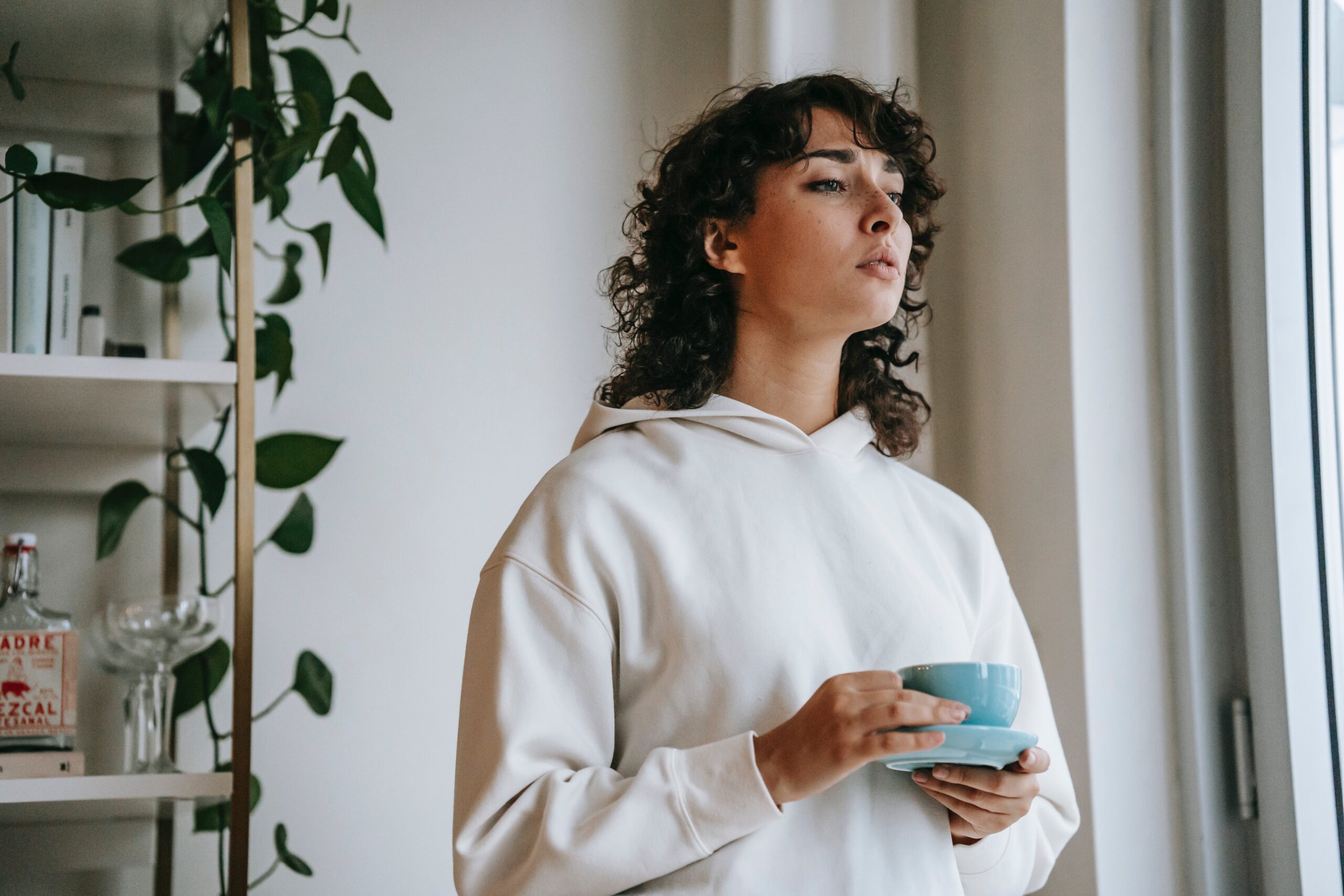In our fast-paced world, it’s not uncommon to experience moments of stress and panic. However, there are times when these feelings can escalate into something more intense and overwhelming – anxiety and panic attacks. While often used interchangeably, anxiety and panic attacks are distinct experiences that can greatly impact an individual’s well-being.
Let’s delve into the differences between anxiety vs. panic attack, explore their causes, symptoms, and treatments, and offer strategies to manage and find relief from both.
Anxiety: Unravelling the Knots of Worry
Anxiety is a natural human response to stressors, typically triggered by situations that are perceived as threatening or challenging. It’s an emotional state characterized by feelings of apprehension, restlessness, and a sense of impending doom. While it’s normal to feel anxious from time to time, chronic and excessive anxiety can lead to a range of emotional and physical symptoms.
How Common is Anxiety?
Anxiety is a highly prevalent mental health condition worldwide. According to the World Health Organization (WHO), it is estimated that around 264 million people of all ages suffer from anxiety disorders. These disorders encompass a range of conditions, including generalized anxiety disorder, social anxiety disorder, and panic disorder. Anxiety’s prevalence highlights its significance as a global health concern, impacting individuals’ daily functioning, well-being, and overall quality of life.
Symptoms of Anxiety
Common symptoms of anxiety include:
- Excessive Worry: Persistent and unrealistic worry about everyday situations or upcoming events.
- Restlessness: Being on edge, finding it difficult to unwind, or being easily startled.
- Physical Symptoms: Muscle tension, headaches, trembling, sweating, and gastrointestinal discomfort.
- Cognitive Distortions: Catastrophizing, overthinking, and negative thought patterns.
- Avoidance Behavior: Avoiding situations that trigger anxiety can lead to social isolation.
How Long Can Anxiety Attacks Last?
On average, an anxiety attack typically peaks within 10 to 30 minutes. However, some individuals may experience shorter episodes, while others may find their anxiety attacks lasting longer.
Factors such as the intensity of the trigger, individual resilience, and the effectiveness of coping strategies can influence the duration. It’s important to note that seeking professional help can provide guidance on managing anxiety vs. panic attacks and developing strategies to reduce their impact and duration.
Causes of Anxiety
Anxiety can stem from various sources, including:
- Environmental Factors: Stressful life events such as work pressure, relationship issues, financial struggles, and major life changes can contribute to chronic anxiety.
- Genetic Predisposition: A family history of anxiety disorders can increase the likelihood of experiencing anxiety.
- Brain Chemistry: Imbalances in neurotransmitters – the brain’s chemical messengers – can also play a role in the development of anxiety.
- Personality Traits: Certain personality traits, such as being a perfectionist or having high sensitivity, may make you more prone to experiencing anxiety.
Anxiety Management
1. Mindfulness and Meditation
Practicing mindfulness and meditation can help reduce anxiety by promoting relaxation and increasing awareness of the present moment.
You can try various meditation techniques such as deep breathing, body scans, and guided imagery. By cultivating awareness, you become better equipped to simply observe your thoughts and emotions without getting attached to them, leading to a reduction in anxiety and an overall sense of calm.
2. Cognitive-Behavioral Therapy (CBT)
CBT helps you identify and challenge negative looping thoughts and develop healthier coping mechanisms.
Through structured sessions with a trained therapist, you learn to challenge anxious thoughts by evaluating their validity and replacing them with more rational and constructive alternatives. This process empowers you to manage anxiety-provoking situations with a greater sense of control.
3. Regular Exercise
Engaging in regular physical activities, like jogging, swimming, or yoga, triggers the release of endorphins, hormones that elevate mood and promote a sense of well-being. Beyond the immediate mood-enhancing effects, consistent exercise also improves overall physical health, which in turn positively impacts mental health and helps to alleviate chronic anxiety.
4. Healthy Lifestyle
Prioritizing a healthy lifestyle involves consuming a well-balanced diet rich in nutrients, which can support brain function and stabilize mood. Adequate sleep is crucial for regulating emotions and maintaining cognitive function, making it an essential aspect of anxiety management. Avoiding excessive caffeine and alcohol is important because these substances can disrupt sleep patterns, exacerbate anxious feelings, and lead to a cycle of increased anxiety and poor sleep.
5. Stress Management
Learning stress management skills empowers you to navigate challenging situations more effectively. Good time management helps prevent overwhelming workloads and deadlines, reducing the likelihood of anxiety spikes. Developing reasoning skills enables you to approach problems with a rational mindset, preventing the escalation of irrational fears. Setting healthy boundaries involves recognizing your limits and communicating assertively, which prevents excessive stress from external sources.
6. Support Groups
Joining support groups allows you to connect with individuals who share similar experiences, fostering a sense of belonging and reducing feelings of isolation. These groups provide a platform to share stories, exchange coping strategies, and offer mutual understanding and empathy. When you normalize the struggles associated with anxiety and share successful coping techniques, you learn new ways to manage anxiety effectively.
Panic Attack: The Storm Within
On the other hand, panic attacks are intense episodes of fear that come on suddenly and reach their peak within minutes. These attacks are accompanied by physical symptoms that can mimic those of a heart attack. Panic attacks are usually brief, but they can leave a lasting impact on your emotional well-being.

How Common are Panic Attacks?
Up to 35 percent of the population experience a panic attack at some time in their lives.
Symptoms of Panic Attacks
Here are some symptoms of a panic attack:
- Rapid Heartbeat: Chest pain that is frequently accompanied by a racing or thumping heart.
- Shortness of Breath: Feeling like you can’t catch your breath or are suffocating.
- Dizziness: Feeling lightheaded or dizzy, sometimes leading to fainting.
- Tingling Sensations: Numbness or tingling in the extremities or around the body.
- Fear of Losing Control: Having the impression that you are losing control of yourself or becoming insane.
Duration of a Panic Attack
On average, a panic attack typically reaches its peak intensity within 10 to 30 minutes. However, the total duration can extend for a bit longer due to the gradual onset and resolution of symptoms. Some individuals may experience shorter panic attacks that last only a few minutes, while others might find their panic attacks lasting longer, up to an hour or more, in rare cases.
Causes of Panic Attacks
Panic attacks can be triggered by:
- Stressful Events: Traumatic experiences, major life changes, or extreme stress can trigger panic attacks.
- Phobias: Specific phobias, such as a fear of flying or heights, can lead to panic attacks when confronted with the feared situation.
- Biological Factors: Genetics and changes in brain function or structure may contribute to the development of panic attacks.
- Substance Abuse: Certain drugs or medications and withdrawal from substances can induce panic attacks.
Panic Attack Management
1. Breathing Techniques
During a panic attack, focus on your breathing. Take in slow, long breaths to regulate your heart rate and bring a sense of calm. Inhale deeply through your nose for a count of four, hold for four, and exhale slowly through your mouth for a count of six.
2. Progressive Muscle Relaxation
This technique involves tensing and then relaxing different muscle groups to alleviate physical tension. Start from your toes and work your way up, tensing and then releasing each muscle group in your body. This helps release the physical tension that often accompanies panic attacks.
3. Grounding Techniques
Engaging your senses by focusing on things around you can help bring your attention away from the panic attack. Use grounding techniques to stay connected to the present moment. Describe your surroundings in detail, name three things you can see, touch, hear, smell, and taste. This technique helps shift your focus away from panic-inducing thoughts.
4. Seeking Professional Help
If panic attacks are significantly affecting your quality of life, consider therapy, such as CBT.
Consider seeking medical help if panic attacks are frequent or severely impacting your life. Therapists can provide tailored strategies, therapy, and if needed, medication to manage your panic attacks effectively.
5. Lifestyle Modifications
Engaging in regular exercise, like brisk walking, jogging, or yoga, has a dual impact on panic attack management. Physical activity helps release endorphins, the body’s natural mood enhancers, which contribute to reduced anxiety levels. Moreover, consistent exercise can improve cardiovascular health, enhancing the body’s resilience to stress and panic-inducing situations. A balanced diet can not just provide essential nutrients to support brain health, but also aid in emotional well-being.
Adequate sleep is crucial for maintaining a stable mood and reducing susceptibility to panic attacks, as sleep deprivation can exacerbate anxiety.
6. Monitor Triggers
Keeping a detailed journal of when panic attacks occur, and the circumstances surrounding them is a valuable tool for gaining insight into your triggers. Record not only the external events but also your thoughts, feelings, and physical sensations leading up to the panic attack. Over time, patterns may emerge that highlight specific situations, stressors, or thoughts that consistently precede panic attacks. By identifying these triggers, you can work on either avoiding them whenever possible or developing coping strategies to manage them effectively.
7. Practice Regular Self-Care
Dedicate time to activities that bring you joy and relaxation. This could involve pursuing hobbies you’re passionate about, such as painting or gardening. Spending quality time with loved ones provides emotional support and a sense of connection, which can mitigate feelings of isolation that often accompany panic attacks.
Physical exercise promotes overall well-being and helps discharge accumulated stress and tension. Reading, meditation, deep breathing exercises, or spending time in nature can all be powerful ways to unwind and reduce stress levels. By consistently integrating these self-care practices into your routine, you’re proactively equipping yourself with tools to manage anxiety and decrease the livelihood of panic attacks occurring.
Distinguishing Between Anxiety vs Panic Attack
While anxiety vs. panic attacks share some symptoms, there are key differences that set them apart:
1. Onset and Duration: Anxiety tends to be a chronic condition characterized by persistent worry and unease, while panic attacks are sudden and intense episodes that subside relatively quickly.
2. Intensity of Physical Symptoms: Panic attacks often involve more severe physical symptoms, such as a racing heart, chest pain, and shortness of breath, which can resemble a medical emergency.
For some, anxiety might manifest primarily as subtle cues, such as a slightly increased heart rate, shallow breathing, or a fluttering sensation in the stomach. Others may experience more pronounced symptoms, including rapid heartbeat, shortness of breath, trembling, sweating, and a sensation of tightness in the chest.
3. Triggers: Anxiety can be triggered by various stressors and worries, while panic attacks often have specific triggers or phobias.
4. Worry vs. Fear: Anxiety is often rooted in excessive worry about future events, while panic attacks are characterized by intense fear and dread.
Conclusion
In a world that can be overwhelming at times, it’s important to recognize the differences between anxiety vs. panic attacks. While anxiety is a persistent state of unease often tied to daily stressors, panic attacks are intense episodes of fear with sudden onset and distinct physical symptoms.
By understanding these differences and employing effective management strategies, you can take control of your emotional well-being and find relief from the grips of anxiety vs panic attack. Remember, you’re never alone on your journey to mental health and balance.
















